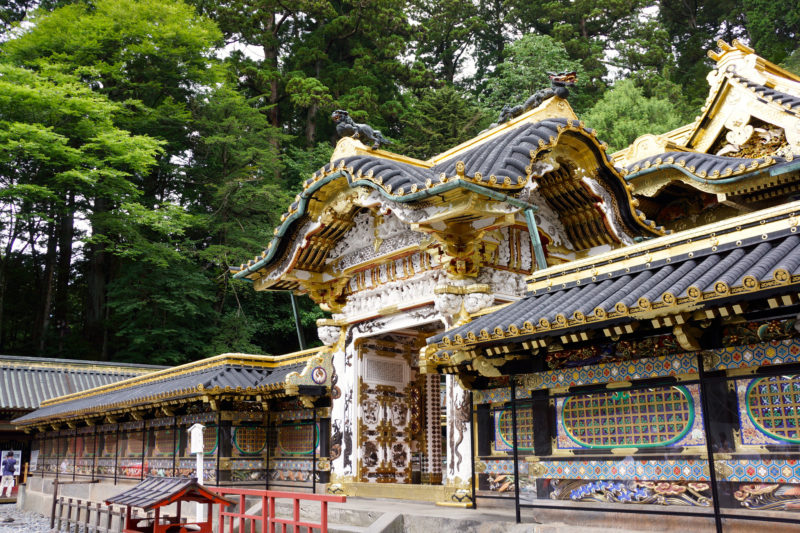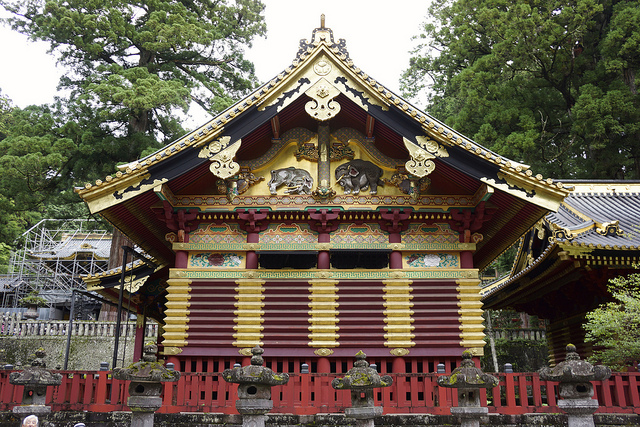
Source: Kentaro Ohno
This is without doubt one of the must go shrines in Nikko. Toshogu Shrine is a place where Tokugawa Ieyasu is resting his final, He was founding the father of the Tokugawa Shogunate that dominated Japan for over 250 years till 1868. It is rather vibrant, very stunning. And trees surrounding are an incredible setting. This complicated part of a World Heritage site.
1. Historical past
Toshogu is devoted to Tokugawa Ieyasu, who discovered the Tokugawa shogunate. Initially inbuilt 1617, in the course of the Edo period. Initially a comparatively simple mausoleum, Toshogu was enhanced into a great complex seen at this time by Ieyasu’s grandson Iemitsu throughout the first half of the 1600s. The 5-story pagoda was donated by a daimyo in 1650 which was very unique, however, it was burned in a fire, and was rebuilt in 1818.
2. Storehouses
The paid space begins at the entrance gate. Upon entering, guests will get the pleasure to see the group of ostentatiously constructed storehouses. Of the numerous colorful and elaborate wooden carvings that enhance the storehouses, probably the most well-known ones are these of the “speak no evil and listen to no evil ” the elephants and the monkeys that have been carved by an artist on the walls of the shrine.
3. Five-story pagoda
Out of many buildings at the shrine Toshogu, significantly notable ones include a fairly 5 story pagoda in the entrance of the primary entrance gate. The pagoda’s main pillar hangs ten cm above the floor – an attention-grabbing characteristic put in to fight the shrinkage and lengthening of the wooden over time. The inside of the pagoda is barely open periodically for the guests at a separate charge.
4. Yomeimon Gate
In the past, the storehouses were rehabilitated and now Yomeimon Gate which is at present being renovated and covered up by scaffolding. It’s perhaps Japan’s most ornate construction, with its intricate architectural features and decorations that are giving off an imposing and grand air .
5. Honjido Hall
At the shrine, there is a path to the left of Yomeimon that leads to the Honjido Hall that features the “Crying Dragon”. It is a great sculpture of a dragon on the ceiling of the corridor, which is thus named because a vivid ringing sound could be heard when two items of wooden are clapped immediately underneath its head because of the acoustics of the hall.
6. Main Shrine Building
 Source: Kentaro Ohno
Source: Kentaro Ohno
The main shrine building Yomeimon is consists of the praying area (hidden) that is linked to the principle corridor (honden) behind. The halls have devoted the spirits of Ieyasu and two different of Japan’s most influential historic personalities, Minamoto Yoritomo and Toyotomi Hideyoshi. Guests are welcome to enter to the richly ornamented building however photographs aren’t allowed.
7. Nemurineko
To the right side of the main shrine building, there is the Sakashitamon Gate, where you will be able to see the well-known carving of the Nemurineko (sleeping cat). The start of an extended flight of stairs Sakashitamon marks that lead uphill via the woods to Tokugawa Ieyasu’s mausoleum. The stroll takes about 5 minutes after that guests will see the comparatively refined, but dignified mausoleum.
Information
- Address: Nikko 321-1431, 2301 Sannai, Tochigi Prefecture
- Phone: +81 288-54-0560
- Hours: 8:00 to 17:00 (until 16:00 from November through March)
- FEES: yen 1300 (admission to all parts of the shrine)
Have a good trip and travel!














